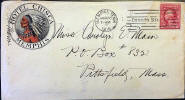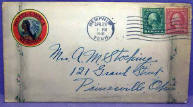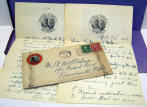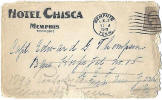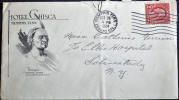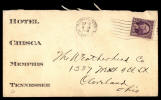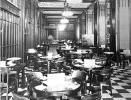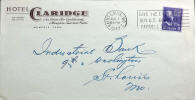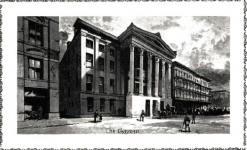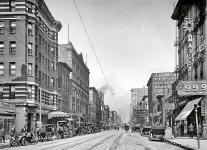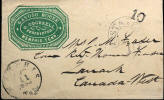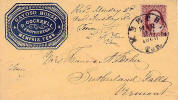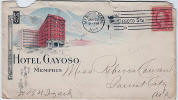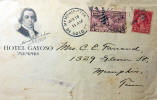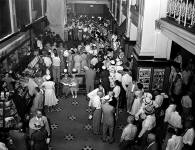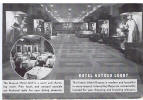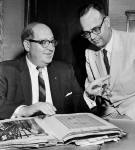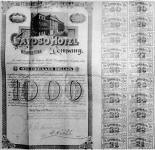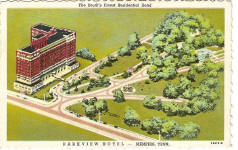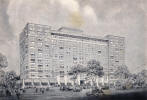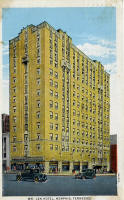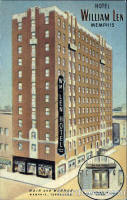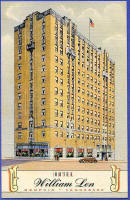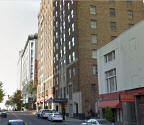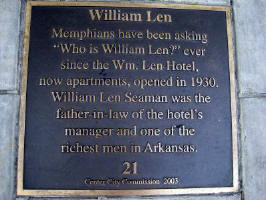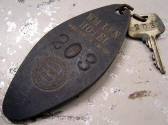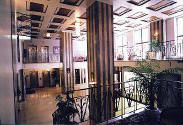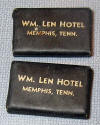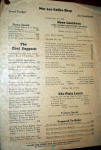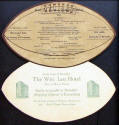|
Historic Memphis
Hotels
...The Major Hotels of the City |
| |
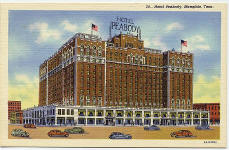 |
From the 1920's, Memphis
had a number of large, luxury hotels in the downtown area. They
flourished until the 60's, when urban
decline began to make an impact on cities.
Memphis was also victim to
the racial tension that plagued the nation, but it was escalated by
the City sanitation workers strike in 1968. Dr. Martin Luther
King, in Memphis to lead a march protesting the worker's condition,
was assassinated on the balcony of the Lorraine Motel. The riots
and fires that followed, combined with the national trend toward
"suburbanization", sent Downtown Memphis into a complete downward
spiral from which it wouldn't recover for many years.
|
| |
|
By the 1970s, Downtown had
all but died. Large areas fell victim to neglect;
buildings on virtually every block were vacant; even the once-vibrant
Beale Street had been boarded up; and all the major hotels had closed
or were preparing to close their doors.
Today, of these original,
major hotels, only the
Peabody remains, although several of the hotel buildings were restored and
renovated as Town Houses. Most of the photos below are postcards of
the hotels during early years.
|
The original
intent of this page was to cover only the Major Luxury hotels in Memphis from the
1920's up to the late 60s. So many emails have been received mentioning
other hotels that a 2nd page has been added. Many additional
large and small hotels from 1868 to 1918 have now been included. A
link to the 2nd page appears at the bottom. This page
will always be "under construction" and will change whenever new
information or new photos become available. Please check back often.
|
| |
|
| |
| |
|
Chisca Hotel
- 272 S. Main |
| |
|
The Chisca
Hotel is 8 stories tall. It may be an eyesore now
but it was once a very impressive building and still has
the potential to be one again. It was owned by
Church of God in Christ and although it has a 93 year
history, its future restoration was in doubt, but as of
2014, it is is being renovated into apartments and shops.
The Chisca was never on a level with the Peabody or Gayoso,
but it does have some wonderful and interesting
architectural elements and a distinct place in Memphis
history. Built in 1913, it stood as the largest
hotel in its district, but it was always more utilitarian
than luxury. |
| |
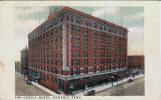 |
 |
 |
 |
| Vintage Postcard |
Vintage Postcard 1920s |
Chisca
ready for reno ... |
Chisca
Today... |
|
| |
|
|
| |
|
|
| |
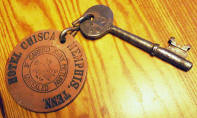 |
 |
 |
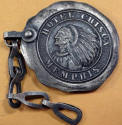 |
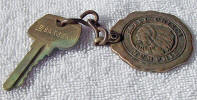 |
| Chisca Key |
Key |
Fob |
Fob |
Key & Fob |
|
| |
|
The hotel's historic significance comes mainly from its
connection to Elvis Presley.
From 1949-56,
its mezzanine was the broadcast base for WHBQ radio's
"Red, Hot, and Blue" program. It was from there that
Dewey Phillips broadcast Elvis' first record July 7, 1954.
And Elvis' first radio interview was also conducted in the
hotel by Phillips.
The Chisca building was donated by the Snowden family to
the Church of God in Christ for $10 in 1971. They
acquired the hotel along with other downtown properties
with the intention of creating a group of developments to
be called Saint Center. Their plans never
materialized but they made the hotel their headquarters
from the early 1980s to the late 1990s when it was
abandoned. Since then, the building was neglected and
fell into disrepair, with lower windows boarded up.
Various plans for the hotel didn't materialized.
And Preservationists would only support a plan that
included restoration.
In 2012 a
local development group has a new life planned for the
long-abandoned Chisca, that could see the building rise to
prominence in its reenergized South Main Neighborhood.
The plan is to convert the 300,000 square foot 1913 hotel
into 149 modern apartment units with an average size of
940 square feet as well as 5,400 square feet of space to
lease for commercial tenants.
| |
|
|
|
2015 .
Tenants began moving into the renovated "Chisca on
Main" |
 |
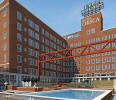 |
| |
Chisca
on Main . WMC Action News Photos |
|
| |
 |
 |
 |
 |
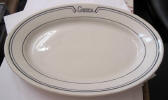 |
| Chisca Collection |
Platter |
Creamer |
Ash Tray |
Plate |
|
| |
 |
 |
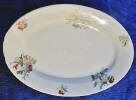 |
 |
| Butter Plate |
Luggage Tag |
Vintage Platter |
Vintage Silver Spoon |
|
|
|
|
| |
 |
 |
 |
 |
 |
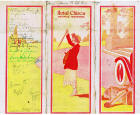 |
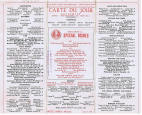 |
|
< <
< Chisca
1955 Coffee Shop Menu >
> > |
1916 Ad |
Chisca
VERY RARE 1920 Menu |
|
| |
|
|
| |
 |
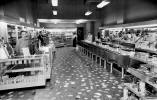 |
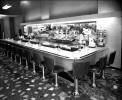 |
 |
 |
| Chisca Ashtray |
1953 Sundry Shop |
Fountain |
Pool |
Lobby |
|
| |
 |
 |
 |
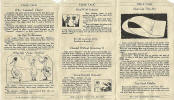 |
 |
 |
| Elvis-1954 |
Elvis-Natalie 1956 |
"Table Talk" ... Chisca
Publication - 1920s |
Matches |
Ashtray |
|
| |
 |
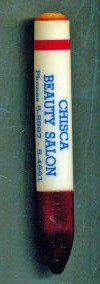 |
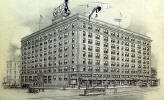 |
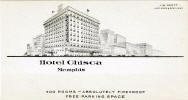 |
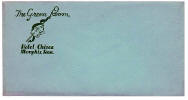 |
| Mug |
Bobby Pins |
Drawing |
Letterhead |
Green Room Envelope |
|
|
|
| |
|
"WHBQ and Red Hot and Blue with Daddy O Dewey not only
played Elvis for the first time but also Johnny Cash,
Jerry Lee Lewis and B.B.King. The Chisca was a nice
business hotel and not a fancy one like the Peabody or
Claridge". - Walter Bolton |
| |
| |
|
|
| |
|
Claridge Hotel
- 109 N.Main and
Adams |
| |
|
The Claridge
Hotel was built in 1924. With 17 floors and 400
rooms, it was Memphis' tallest hotel. And it served
as the focal point of Memphis social life for 3 decades
hosting such well-known performers as the Tommy Dorsey
Orchestra - and later Elvis Presley in the famous Balinese
Room and on the Roof Garden.
A hotel had been on the corner of Main and Adams since the
1880s. The first hotel was the Arlington Hotel.
It was demolished in the 1920's to make way for the more
modern Claridge. With its opulent lobby, ballrooms,
and roof garden, the Claridge was built as an alternative
to the ever-crowded Peabody Hotel 6 blocks away. For
nearly forty years it was a popular destination for
Memphians and out-of-town visitors as well. One
could dine, drink, dance, and stay in one of the very
first Memphis hotels with air-conditioned rooms.
With the big bands on the roofs of the Peabody and The Claridge,
summer evening walks around downtown were alive with music in
the air.
|
| |
 |
 |
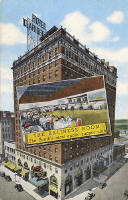 |
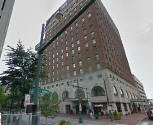 |
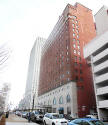 |
 |
|
Vintage Postcards |
Claridge today |
|
1936 Postcard |
|
|
|
 |
 |
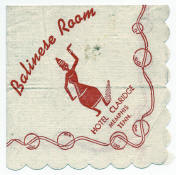 |
 |
 |
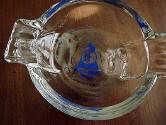 |
| Entrance |
Balinese Room |
Cocktail Napkin, c.1950
|
Matchbook |
1941 News |
Ashtray |
|
| |
 |
 |
 |
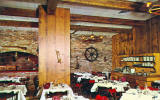 |
|
Lobby |
Mezzanine |
Luggage Tag 1950s |
Bell Tavern |
|
| |
|
|
| |
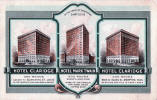 |
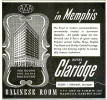 |
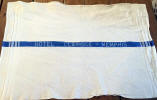 |
 |
|
Vintage |
1952 Ad |
Vintage Hand Towel |
Photo Folder |
|
| |
|
|
 |
 |
 |
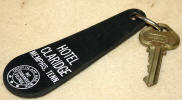 |
|
Vintage Claridge Matchbooks |
Key FOB |
Vintage Key |
Vintage Key |
Vintage Key |
|
| |
|
Urban decline in the
1960's and 70's shuttered many of Memphis' once luxurious
hotels, including the Peabody. The Claridge closed its
doors in December 1968 and sat vacant for nearly 15 years.
In 1980, the hotel was bought, extensively renovated, and
reopened as Claridge House Apartments in 1984. The concept
was a hit and a great victory for those in the fight for urban
renewal. By 2004, the condominium market was exploding,
and again the building was renovated to become Claridge House
Condominiums. The Claridge building
is on the National Register of Historic Places. |
| |
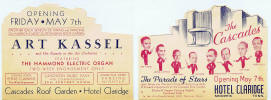 |
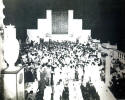 |
 |
 |
| Vintage Cascades Roof Garden
Program |
Starlight Roof |
Fork |
Claridge Corkscrew |
|
| |
 |
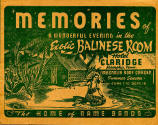 |
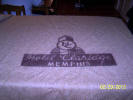 |
 |
 |
| Do not disturb |
Balinese Photo Cover |
Claridge Blanket |
Claridge Soap |
Claridge Soap |
|
| |
|
Below: A 1938 Claridge folder - 12 pages |
| |
|
|
| |
|
|
| |
|
|
| |
 |
 |
 |
 |
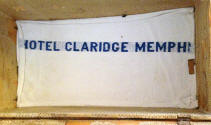 |
| Opener |
Compote |
Matchbook |
Stationary |
Towel, C. 1968 |
|
| |
|
|
|
|
| |
|
Gayoso Hotel
-
Main Street
|
| |
|
The Gayoso was built by Robertson Topp, a wealthy planter. He
was involved in the development of South Memphis, an area of houses,
commercial buildings, and a hotel designed to grace the young city
with high architectural style. He commissioned James Dakin to
design the structure, which was constructed in 1842. The hotel
was named for Governor Manuel Luis Gayoso de Lemos, Spanish governor
of the Natchez district.
The Gayoso House became a Memphis landmark, an oasis of luxury
frequented by visitors of the city. With its own
waterworks, gasworks, bakeries, wine cellar, and sewer system,
the hotel offered amenities far beyond those available to the
rest of Memphis. The indoor plumbing included marble
tubs and silver faucets as well as flush toilets. It's
Greek Revival portico was easily recognizable from the river.
In the late 1850s, Topp continued his efforts to bring
architectural distinction to Memphis, and hired the Cincinnati
firm of Isaiah Rogers to build an addition that doubled the
Gayoso's original 150 rooms. The addition featured
wrought iron balconies overlooking the Mississippi.
During the Civil War, the Gayoso served as the Union Headquarters during the
Union's
occupation of Memphis. |
|
|
|
|
|
| |
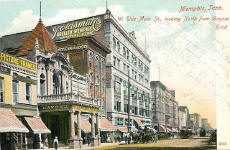 |
 |
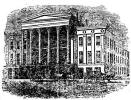 |
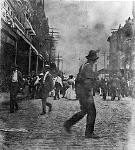 |
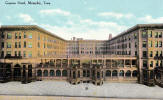 |
| Vintage Postcard |
Gayoso |
1849 |
Burns 1899 |
Front Street Gayoso |
|
| |
|
|
| |
 |
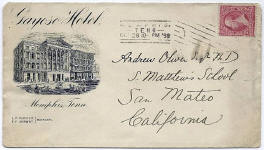 |
 |
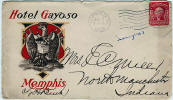 |
|
1897 |
1898 |
1904 |
1906 |
| |
|
|
|
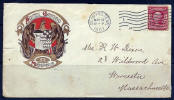 |
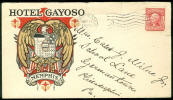 |
 |
 |
|
1907 |
1908 |
1908 |
1910 |
|
| |
|
|
| |
 |
|
|
|
|
1940 |
|
|
|
|
| |
|
In
the mid-19th century, the Gayoso House was known up and down the
Mississippi River for its elegance and hospitality. But
as
years passed the famous landmark fell on hard times. By 1876
it no longer attracted the best clientele.
The Gayoso House burned in 1899. To replace it, James B. Cook
designed a new hotel. His U-shaped construction surrounded a
courtyard screened from Front Street by a row of columns and opened
in 1902. Afterwards, there was an effort to return the Gayoso
to its former glory, but it never quite achieved the fame of the
previous Gayoso.
Goldsmith's Department Store, which was next door to the Gayoso,
bought the hotel in 1948 and used it for offices and storage.
The Gayoso closed its doors in 1962. Fifty years later,
It has now been restored and used for downtown apartments,
residences, restaurants, and offices. |
| |
 |
 |
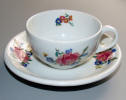 |
 |
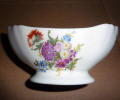 |
 |
|
Plate 1939 |
Dish 1937 |
Cup-Saucer 1937 |
Cup-Saucer |
Sugar |
Creamer |
|
|
|
|
 |
 |
 |
 |
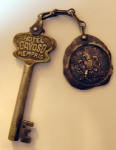 |
 |
| |
<
Vintage Keys and Fobs > |
|
|
| |
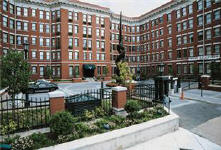 |
 |
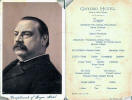 |
 |
| Gayoso Apts today |
1906 Calling Card Dish |
1887 Grover Cleveland |
Vintage Postcard |
|
|
|
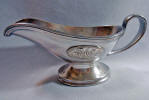 |
 |
 |
 |
 |
 |
 |
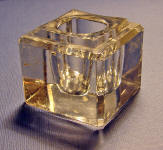 |
|
Gravy Boat |
Fork |
Spoon |
Spoon |
Spoon |
1890
Engraving Plate |
Pens |
Crystal Ink Well |
|
|
|
|
|
 |
 |
 |
 |
|
Vintage Gayoso Matchbooks |
Gayoso Soap |
Luggage Tag |
1918 card |
Room 1900 |
|
| |
|
|
| |
 |
 |
 |
 |
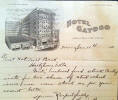 |
|
History Marker |
Gayoso Lobby |
Peabody-Gayoso |
1906
postcard |
Letterhead 1910 |
|
| |
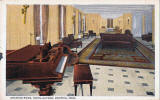 |
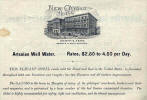 |
 |
 |
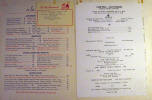 |
|
Drawing Room |
1850 Ad |
1885 Grand Ball |
1950 Menu |
1950 Menu |
|
| |
| |
|
|
|
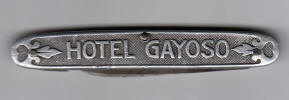 |
| |
|
|
|
Gayoso Pocket knife |
|
| |
| |
|
|
| |
|
Hotel King
Cotton
(DeVOY ... ELKS)
- 69 Jefferson at Front Street
|
| |
|
Hotel King Cotton was a 12 story high-rise.
It was originally built in 1925 as "The Elks Club and Hotel", but
in 1939 the name was changed to Hotel de Voy, in honor of Elks
Ruler Clarence De Voy. It advertised "safety and comfort
without extravagance". It later became the King Cotton.
In addition to its 150 rooms, the hotel was equipped with a
gym, swimming pool, bowling alley, squash and handball court.
The King Cotton closed in 1972 and the
building was imploded April 1984. |
| |
 |
 |
 |
 |
 |
 |
|
Elks Club
|
Hotel De Voy |
DeVoy 1931 |
King Cotton |
King Cotton |
Proposed Elks Club |
|
| |
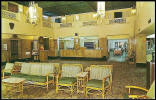 |
 |
 |
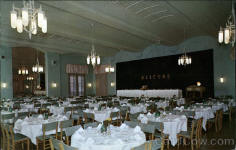 |
|
King Cotton Lobby |
Elks Lobby |
King Cotton Lobby |
King Cotton Dining Rm |
|
| |
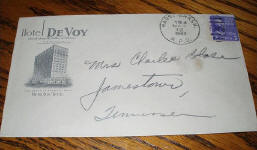 |
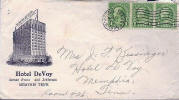 |
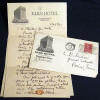 |
|
 |
|
DeVoy 1941 |
DeVoy 1935 |
Elks 1931 |
Matchbooks |
Elks-Devoy 1932 |
|
| |
 |
 |
 |
 |
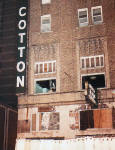 |
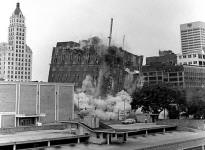 |
|
Vintage King Cotton Menu |
Luggage Tag |
Matchbook |
K. C. Decay |
K. C. Implosion 1984 |
|
| |
 |
 |
 |
 |
 |
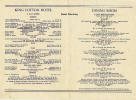 |
 |
|
Ashtray |
Glass |
Opener |
Ice Bucket |
1935 King Cotton Menu |
Vintage Key |
|
| |
 |
 |
 |
 |
 |
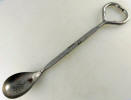 |
|
Devoy
1943 |
Elks Club 1928 |
Elks details 1928 |
Elks Key |
K. C. Key |
King Cotton Spoon |
|
| |
 |
 |
|
|
 |
| Elks Club 1909 |
Hotel Construction |
|
|
Vintage Key
|
|
| |
|
"...really
brought back memories. I well remember the DeVoy at
Front and Jefferson, which was later the King Cotton.
I'm not sure which name it had in 1947 or '48 when Kemmons
Wilson (later founder of Holiday Inns) treated me to lunch in
the hotel coffee shop. After he remardek that he felt
that he had achieved success, I asked why and he replied,
"Today, I owe One Million Dollars". That represented
loans on construction projects he had under way. Not too
many later, one of us was a multi-millionaire, but it was not
I". - Glenn Raby |
| |
|
"...As a child in the 30's, I spent 2 or 3 nights a week in
the locker room of the Bowling Alley deep in the bowels of the
DeVoy (King Cotton). Mother and Daddy paid the rent
winning 'a penny a pin and loser pays for the game'.
They both became City Champs and I learned to shine shoes..."
- Stanley Porter |
| |
| |
|
|
| |
| Parkview Hotel
Apartments
-
1914 Poplar Av |
| |
|
|
| |
|
Located at an
entrance to Overton Park, The Parkview was at its zenith in
the 1920's. It was one of the finest hotels in the city.
But the location out of city center had an adverse effect on
the property. And yet, the hotel managed to make the
transition from hotel to apartments to its current retirement community
status. |
| |
 |
 |
 |
 |
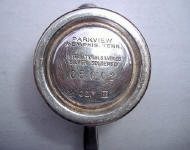 |
|
1940 letter |
Key Fob |
Double Matchbook |
Parkview Silver
Creamer - 1923 |
|
| |
| |
|
|
|
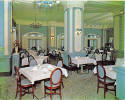 |
| |
|
|
|
Wedgewood Room |
|
| |
| |
|
|
| |
|
Peabody Hotel -
149 Union Avenue |
| |
|
*
The Peabody Hotel is covered
in-depth on a separate page of this website.
Click Here |
| |
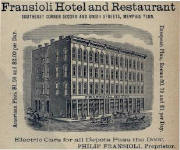 |
 |
 |
 |
 |
| Fransioli
-
1920's |
Original Peabody
|
The
Peabody on Main |
The
Peabody |
Peabody Lobby |
|
| |
|
The Peabody is a luxury hotel. No hotel in Memphis history has
more "magic" associated with its name. The original Peabody
was located on the corner of Main
and Monroe, and it was highly successful. It closed in 1923.
The current Peabody on
Union Avenue, was built in 1925 on the site of the Fransioli
Hotel (Above Photo). The top floor - the Skyway, offers
stunning views of the city and the river.
The famous ducks became part of the hotel legend in the 1930's.
The Peabody closed in early 1970's, generally an era of urban blight
for many American cities. The Jack Belz family purchased the
hotel from the county in 1975 for $400,000 and spent the next
several years and $25,000,000 renovating the landmark structure.
The grand reopening in 1981 is widely considered in Memphis as a
major stimulus and inspiration for the downtown revitalization that
followed. Today, The Peabody continues to offer world class
accommodations and is a historic icon in Memphis.
|
| |
| |
|
|
| |
|
Hotel
Tennessee -
80 S. 3rd and Union |
| |
|
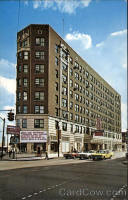 |
 |
 |
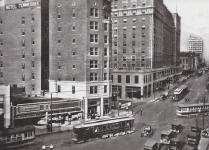 |
 |
| |
|
Matchbook |
Hotel Tennessee -
circa 1929
|
Now, the Doubletree
Memphis Downtown |
|
| |
|
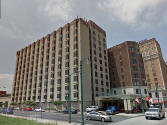
The Doubletree ... today |
|
Built in 1927, Hotel
Tennessee had 200 rooms and baths. Listed in the
Memphis Directories up to 1948, Part of the original
hotel remains within the lobby of the New Doubletree at
this location, including a portion of the front of the
building. |
| |
|
|
|
 |
 |
 |
 |
|
1941
Envelope
|
Vintage Postcard |
1963 |
Menu |
|
|
| |
 |
|
|
|
 |
|
1934 Envelope |
|
|
|
Soap 1944 |
|
| |
|
|
|
|
| |
|
Hotel William
Len -
110 Monroe at Main St. |
| |
|
|
| |
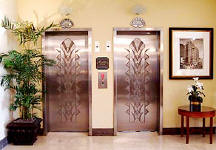 |
Hotel William Len was
built in 1930. It had 250 Rooms and Suites - all with baths
and air conditioning. Listed in the Memphis Directories up to
1948. It was noted for
the good food in its Coffee Shop
and particularly for its classic Art Deco design - especially the
famous elevator doors. In 1968 it became the Viking
Hotel.
Brian T. Case, the Facility Manager from
1994 to 2003 writes, "The hotel was converted and modernized
into 89 apartment units in 1991 and remained so until 2003 when
Marriott purchased it and mostly kept the floor plans and converted
it into an extended stay hotel. The elevator doors are not
original but were expertly crafted to match the decor. The upper
mezzanine windows and three lanterns down Monroe avenue are original
as well as the lobby stone veneer and floor." Today
the building is a
Residence Inn
and is on the National Register of Historic places. |
| Art Deco Elevator
Doors |
|
|
| |
|
|
| |
|
|
| |
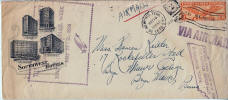 |
 |
 |
|
1938
Envelope |
Wm Len
Liquor Store |
1948 Envelope |
|
| |
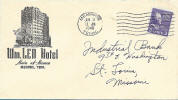 |
|
|
|
|
1948 Envelope |
|
|
|
|
| |
| |
|
| |
|
Jim Crow
Laws and
Segregation were in effect during the "hey day" of Memphis' great
hotels. Black performers and black celebrities who came to
Memphis had to find "other arrangements" for lodging. There
were a few hotels that catered to African Americans, but finding
their history (and photos) has become increasingly more difficult each year.
The "colored hotels" are included on the 2nd page of the Hotel section
with the "Smaller Hotels" |
| |
|
|
| |
|
| |
|
Credits |
|
|
|
The
Historic-Memphis website does not intentionally post copyrighted
photos and material without permission or credit.
On
occasion a "non-credited" photo might possibly be posted because we
were unable to find a name to give credit. Because of the nature of
our non-commercial, non-profit, educational website, we strongly
believe that these photos would be considered "Fair Use. We have
certainly made no monetary gain, although those using this website
for historic or Genealogy research have certainly profited. If by
chance,
we have posted your copyrighted photo, please contact us, and we'll
remove it immediately, or we'll add your credit if that's your
choice. In the past, we have found that many photographers
volunteer to have their works included on these pages and we'll
also do that if you contact us with a photo that fits a particular
page. |
|
|
|
The "Historic-Memphis" website would like to acknowledge and thank the
following for their contributions which helped make this website
possible: Memphis
Public Library, Memphis University Library, Memphis Law Library,
Memphis Commercial Appeal, Memphis Press Scimitar, Shelby County
Register of Deeds, Memphis City Schools, Memphis Business Men's
Club, Memphis Chamber of Commerce, Memphis City Park Commission,
Memphis Film Commision, Carnival Memphis, Memphis Historical
Railroad Page, Memphis Heritage Inc, Beale Street Historic District,
Cobblestone Historic District, Memphis Historic Districts, Vance
Lauderdale Family Archives, Tennessee State Archives, Library of
Congress, Kemmons Wilson Family, Richard S. Brashier, Lee Askew,
George Whitworth, Woody Savage and many individuals whose assistance is
acknowledged on the pages of their contributions. Special
thanks to Memphis Realtor, Joe Spake, for giving us carte blanche
access to his outstanding collection of contemporary Memphis photos.
We do not have high definition copies of the photos on these
pages. If anyone wishes to secure high definition photos,
you'll have to contact the photographer or the collector.
(To avoid any possibility of contributing to SPAM, we do not
maintain a file of email addresses for anyone who contacts us). |
|
|
|
|
|
|
| |
|
Please visit the website
that sponsors this page |
|
|
|
Historic Memphis Website |
| |
|
|





